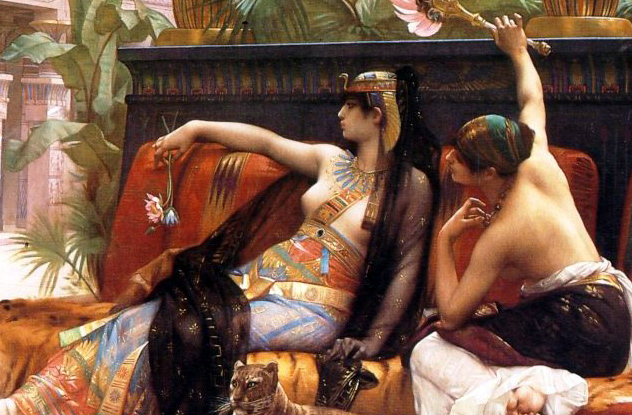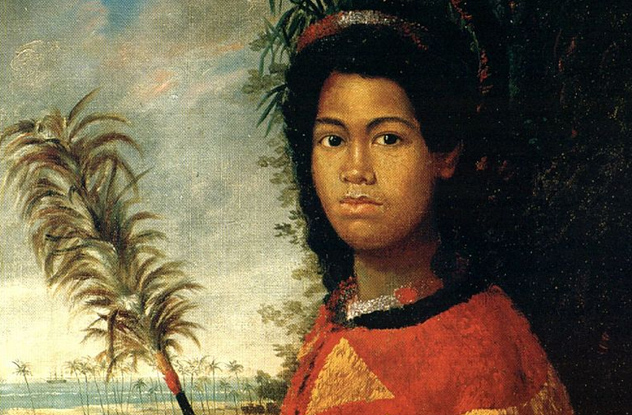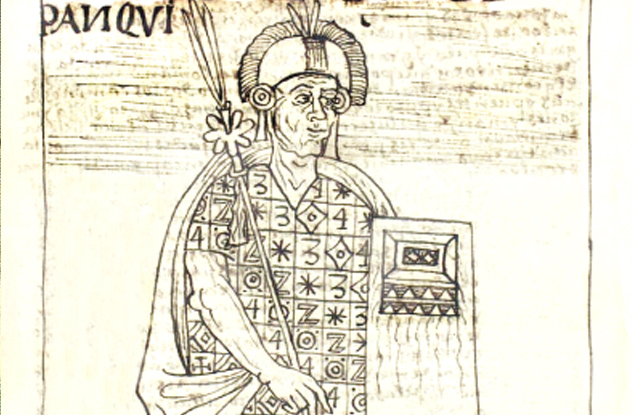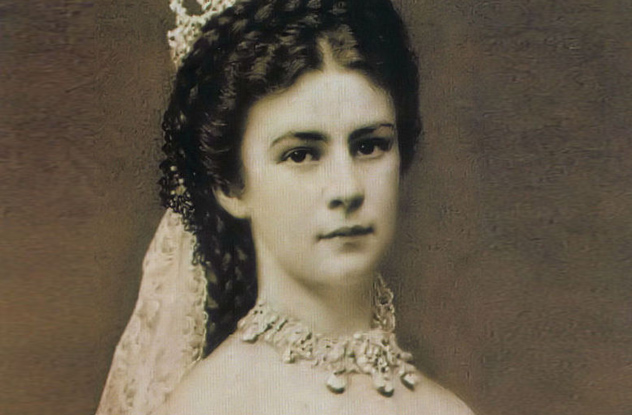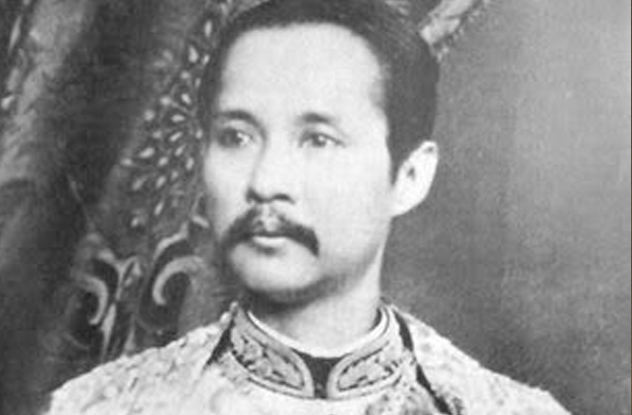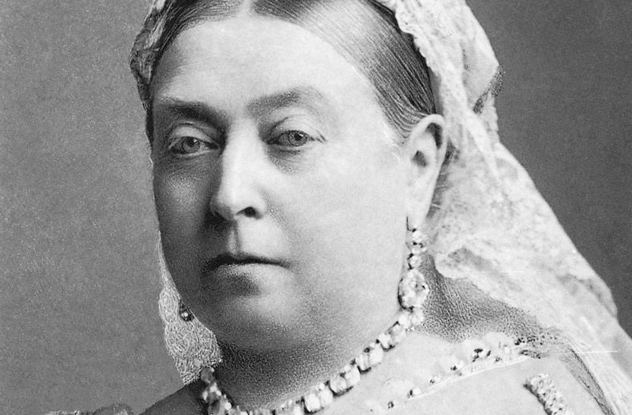With so much at stake, royal families across the world have tried to keep the bloodlines clean and the seat of power firmly intact through strategic intermarriage. Ignoring rules of consanguinity may have kept various family members gainfully employed for generations. What’s the downside? (Aside from the inherent grossness, of course.) The overlapping of genetic material elevates chances of health and developmental problems, as well as murder and exile. King Tut’s many health issues—necrosis, a partially cleft palate, and stillborn children with his own sister-wife—are thought to be connected to his family tree, which looked more like a wreath due to generations of incestuous coupling. Perhaps the most famous example of the perils of inbreeding is King Charles II, the last of Spain’s Hapsburg rulers. The result of 200 years of intermarriage, Charles’s tongue was so large that he could barely speak, and his infamous Hapsburg jaw was so pronounced that he was unable to chew. The behavior that his ancestors chose to keep the crown ended up terminating their line instead. And there are a lot more where they came from.
10The Monomotapa Of Zimbabwe
Various African monarchies practiced dynastic incest, including the Monomotapa of Zimbabwe. Kings were extremely active in polygamy, with one king counting over 3,000 women as wives. His preferred main wives were his sisters or daughters. If anyone who wasn’t king tried to marry his wife or daughter, they were subject to death. The Monomotapa incest tradition is illustrated in the origin story of the Balovedu Tribe’s Rain Queen lineage. The Rain Queen is historically known as a powerful ruler and magician with the power to bring rain or drought to her friends or enemies. Despite the legality of incest within the royal family, the oral tradition implies that the power was given to the first rain queen, Princess Dzugundini, after she birthed a child with her brother (or father, in some stories) and had to flee due to public shame. Rather than kill both the child and the princess, the king gave his daughter rain-making power and arranged for her to escape.
9Cleopatra
Cleopatra VII is still one of the most widely known rulers in Western culture. Her romances and power are the subject of a Shakespeare play, many films, and even an opera, but one marriage in her life often goes overlooked. According to family custom, Cleopatra was married to both of her brothers. In fact, only six individuals filled the 16 great-grandparent roles on Cleopatra’s family tree. While obesity ran in Cleopatra’s family and is possibly linked to the deep levels of intermarriage throughout the years, the most dangerous result of incest in the case of the Ptolemy family tree was the violence that ensued over power grabs. Intermarriage kept power and wealth within the family, but sibling rivalry took on a whole new meaning when control over Egypt was concerned. Royals frequently turned to murder to maintain their status. Cleopatra herself killed not one but two brother-husbands as well as her sister in successful bids for power.
8Nahienaena Of Hawaii
For the monarchy that once existed in Hawaii, incest was encouraged as a privilege for the royal family. One example is Princess Nahienaena, who was born in 1815. According to some, she was romantically involved with her brother from early childhood. Christian missionaries who were gaining influence in the kingdom protested greatly when they learned that Nahienaena and her brother, Prince Kauikeaouli (later known as Kamehameha III), were to marry and produce an heir together. The missionaries persuaded Nahienaena and Kamehameha III to marry other people, but they openly consummated their affair regardless of the new marital arrangements. Nahienaena found herself shunned by both the church and her people, who were by then more intensely influenced by the missionaries. A sickly daughter died shortly after birth. Devastated, Nahienaena died less than a year later. Historians believe that their relationship was more than royal duty, and the siblings were actually deeply in love.
7Incan Incest
Intermarriage existed during the later years of the Incan Empire. While marriage between blood relatives was prohibited for the general population, nobles were exempted from this rule because they were above human law and different than their fellow men. At first, it was common to marry half-sisters so that the common grandfather’s line would be strengthened. Problems arose in terms of succession because rulers tended to have more than one wife, mistress, and concubine. As a result, people began to believe that children with two parents of royal blood instead of one would have a stronger claim to the throne. Rules were established when Incan emperor Pachacuti chose a younger son, Thupa Inka Yupanki, over another for his military skill. Thupa’s female sibling was called a full sister, not a half-sister, to strengthen the rights of her future sons. The changes did not have a lasting effect. Thupa Inka Yupanki’s brother attempted a coup anyway, and the lineage was lost to civil war one generation later.
6Maria Of Portugal
Maria I of Portugal has the distinction of being the first queen regnant to rule her country, but she is also distinguished by her nickname, Maria the Mad. Despite extreme piety, Maria married her uncle Pedro (when crowned, he was renamed Peter III) in 1778. Peter III was Maria’s father’s younger brother and 43 years old to her 26. The family web became more tangled when Maria and Peter III’s son and heir, Joseph, married his aunt (Maria’s sister) Benedita. Joseph was merely 15 while Benedita was 30. Therefore, Peter III’s daughter-in-law, sister-in-law, and niece were the same person. As is often the case with incestuous relationships, the couple could not have children, and Benedita miscarried twice. Joseph died of smallpox two years after his father, which hastened the collapse of Maria’s mental state. Maria’s second son ruled in her place, but the family was forced out of Portugal to Brazil by Napoleon. The inter-family love didn’t stop there. Generations later, Maria II was betrothed to her father’s brother to solve an abdication crisis.
5Elisabeth Of Austria
Elisabeth of Austria was said to be convinced that her lineage was cursed by madness. However, it must have been difficult to pinpoint which family held the curse because her tree was so entangled. Elisabeth’s mother, Ludovika of Bavaria (married to a cousin) was one of 13 children born to Prince Maximillian of Bavaria. Ludovika’s sister Sophie married Archduke Franz Karl of Austria, and they together had a son, Franz Joseph, later Emperor of Austria and King of Hungary. Ludovika groomed her other daughter Helene to marry the Emperor, but Franz Joseph fell in love at first sight with Elisabeth and quickly proposed marriage. The marriage was a disaster. Elisabeth hated court life and had a contentious relationship with her aunt and mother-in-law, the Archduchess Sophie. Her health suffered, but this wasn’t because of the overlap of genes from incest. It was the Emperor’s affairs (he is rumored to have given her a venereal disease by cheating), and Elisabeth’s depression. She had anxious tendencies, was obsessed with her weight and diet, and suffered a nervous breakdown. The family tree remained rather circular in subsequent generations. Elisabeth’s daughter married her second cousin, Leopold, and Sophie and Ludovika’s other sister, Karolina, married Francis II, the grandfather of Franz Joseph. In other words, Karolina was both aunt and step-grandmother to the Emperor, and sister and step-mother-in-law to Archduchess Sophie.
4King Rama V
King Rama V is credited as a reform-minded ruler and talented diplomat who prevented Siam from colonial domination. He abolished slavery and overhauled Siam’s government, laying the foundation for Thailand as a modern state with accomplishments like the first public hospitals and rail systems. He was also accomplished in another way: fatherhood. Tradition dictated a fruitful reign, which Chulalongkorn (as he was also known) apparently took seriously. He fathered 77 children with an estimated 153 royal consorts, concubines, and wives. The role of queen was reserved for royal blood, and Chulalongkorn chose his four half-sisters as wives. Despite the sheer number of children, the king installed Western tutors for all of them and sent numerous sons to college in Europe. He was also aware of how the outside world may have perceived his martial arrangement—but only in respect to its polygamy, not its incest. For this reason, the king reportedly only had himself formally portrayed with Queen Saovabha, as the rest of the women in his life were, in his words, merely “due to custom.”
3Princess Victoria Melita
Princess Victoria Melita is a special case because she married not one but two first cousins. She was also the granddaughter of one of the greatest examples of intermarriage, Queen Victoria, through her father, Alfred, Duke of Saxe-Coburg and Gotha. Queen Victoria wished for her granddaughter to marry her grandson, Ernest Louis, the grand duke of Hesse. They had a daughter (and a stillborn son), but the marriage didn’t work; Victoria reportedly caught Ernest in bed with a male servant, and fights between the two were volatile. After Queen Victoria died, the couple divorced legally, but it still caused a scandal among royal circles. Princess Victoria went on to marry the real love of her life: another first cousin, this time from her mother’s side, named Kirill Vladimirovich. Kirill was a Russian grand duke, and when they married without the approval of Tsar Nicholas II, Kirill was stripped of his office in the Navy and banished from Russia for nearly five years. Eventually, the couple was allowed back into Russia but only because a series of deaths in the Russian royal family made Kirill third in the line of succession. Though Kirill was first cousin to both the Tsar and his wife, the relationship never warmed.
2Queen Victoria
Queen Victoria is well known as a prolific matriarch who believed that intermarriage between European royalty could guarantee peace. Her matchmaking, first of her nine children then of her grandchild, cross-pollinated nearly every royal family in Europe but greatly contributed to the end of the imperial age. In fact, family relations between the descendants who ruled England, Russia, and Britain were very central to World War I. Kaiser Wilhelm’s extreme insecurities and anger toward Britain was directly linked to his English mother’s insistence throughout his upbringing that anything English was superior to Germany. Historians point to the years leading up to World War I as plagued not only by political upheaval but personal familial vendettas by Wilhelm against his cousins King Edward VII and Tsar Nicholas II of Russia. Family feuding was not the only calamity that resulted from the royal inbreeding. Queen Victoria and her husband Albert were first cousins. Along with their descendants marrying among themselves, this is likely how the affliction of hemophilia spread: a woman must acquire the gene from both of her parents. Five grandchildren and one child of Victoria’s died due to complications of hemophilia. Her granddaughter Tsarina Alexandra’s treatment for the afflicted Alexis, heir to the Russian throne, was the most disastrous for the world at large. During World War I, the stress of having the Tsar off with his soldiers at war, as well as the constant battle to keep her son from dying, pushed the Tsarina to keep a self-described mystic healer named Rasputin as one of her most trusted confidants. Nobles and laypersons alike grew suspicious of Rasputin’s growing power. The Tsarina’s dependence on the mystic, as well as her German lineage, added spark to an already dangerous powder keg of Russian discontent. The Imperial Family were murdered after the Tsar was forced to abdicate the throne.
1Ancient Rome
The famous ruler Nero had a salacious side, including rumors of wandering the street to murder innocent citizens at random. His mother, Agrippina, along with his former tutor Seneca, tried to reign in his terrible behavior. This had the opposite of the intended effect: Nero ended up murdering his mother. However, the relationship was much more complicated than a case of Nero acting the part of an extreme enfant terrible. Agrippina married the Emperor Claudius—her uncle—to strengthen Nero’s right to the throne. On top of that union, which was indeed considered incestuous in the eyes of Roman law, Agrippina schemed further to remove the supporters of Claudius’s natural heir and orchestrated the suicide of the fiance of Claudius’s daughter, Octavia. When Nero married his step-sister Octavia, the only impediment that remained was Claudius himself. Agrippina again took action, and one year after Nero and Octavia’s marriage, Claudius died suddenly of suspected mushroom poisoning. Nero subsequently found himself as the leader of the Roman Empire at the age of 16. Agrippina’s actions suggest that she was incredibly vested in Nero’s success, but her interest took an even more intense turn than murder and power. Sensual acts of kissing and the like were witnessed and recorded by the historian and politician Tacitus, and Agrippina was indeed vocal about her intimacy with her son. It became so worrisome that Nero’s lover, Acte, warned him, “The army would not tolerate an emperor who offended the gods.” He was referring to incest, which was absolutely taboo. Agrippina’s jealousy over Nero’s affairs with women like Acte (who reportedly bore a striking resemblance to Agrippina) and Poppaea Sabina, whom she saw as rivals for his affections, eventually caused her demise. Nero orchestrated the murder of his mother in A.D. 59. Kindree Cushing is a Jane of all trades and lover of informative lists.

